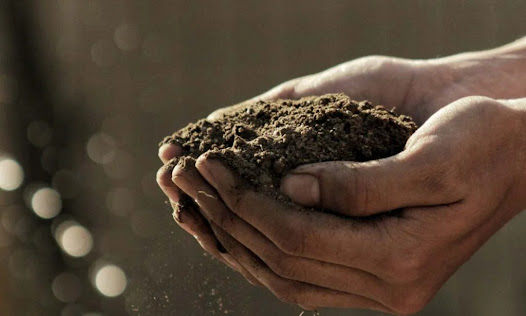How To Improve Soil Drainage With Nonwoven Geotextile Fabric?
Different landscape fabrics function in different ways. Non-woven Geotextile Fabric, on the other hand, is the finest solution for improving soil drainage. There is minimal difference between Geotextile fabric and Non Woven Geotextile Fabric. Well, both fabrics are designed to improve soil stabilization & to offer ground support.
Which one you should choose depends upon the surface you work on and your goals. Selecting the right landscape fabrics for the soil drainage problem completely affects the project outcomes. Let's try to understand the difference between woven & non-woven fabrics and why they are used for soil stability!
Difference between the woven geotextile & non-woven geotextile
Talking about geotextile fabrics are manufactured by the traditional weaving method. In this, individual threads are weaved into sizable sheets. These threads are manufactured using various quality materials, such as slit films, fibrillated yarns, and monofilament yarns.
Woven geotextiles have substantially higher load capabilities, making them excellent for heavy-duty applications like road building. However, their nonporous nature makes them excellent for some erosion control operations in which water must be transferred over the top while not draining into the soil below. Woven geotextiles also provide superior corrosion resistance and long-term durability compared to Non Woven Geotextile Fabric.
Nonwoven geotextiles are created by applying materials altogether rather than weaving them. This is performed by using chemicals or heat and in other ways, such as needle punching. Nonwoven fabrics, which are predominantly constructed of synthetic materials, are widely utilized for separation & filtering purposes. Nonwoven textiles, unlike woven textiles, are not well suited for reinforcing and stabilization applications. However, they are a superior alternative for particular applications, such as protecting geomembrane lining systems from outside or interior penetrations.
Nonwoven geotextiles degrade more quickly than woven geotextiles because they lack the reinforced strength of woven layers. Nonwoven textiles have outstanding strength and resilience, with excellent drainage capabilities. The above-discussed features make them suitable for multiple applications.
How Non-woven geotextile products are crucial for improving soil drainage?
The non-woven geotextiles are manufactured either by using the continuous filament. These filaments are known as the fibers used to filtrate, reinforce, separate, and remove moisture barriers. This is also used for drainage solutions for land reclamation, canal banks, roads, railways & embankments.
The Geotextile non-woven fabrics are used as the crucial element for transporting liquids into gas. The geotextile provides drainage solutions. It is also used with other features like drainage cores, perforated pipes, etc. The non-woven geo-textiles are combined with other elements to improve the drainage capacity. Apart from this, we defined some more key features in the below section regarding Non Woven Geotextile Fabric.
Geotextiles have eliminated the use of graded soil filters for the drainage of nearly all structures. These are used for structures, including groundwater interception systems, roadways, building foundations, dams, and walls. When compared to traditional soil filters, geotextiles provide advantages such as constant and continuous filtering, reduced excavation, lower environmental effect, higher quality construction, and substantial cost savings.
Both woven and nonwoven geotextiles work in an effective way when draining stable, coarse-grained soils. Nonwovens are typically employed when retaining tiny soil particles is crucial to the drainage system's effectiveness.
Filtration:
Non Woven Geotextile Fabric is utilized to hold fine dirt particles. This method keeps tiny particles from leaching and draining components. It is the most popular geotextile technology, created in the mid-1960s.
Separation:
Nonwovens are utilized to separate two different types of soil with varying particle sizes. It aids in the prevention of extremely fine subgrade soils from being pumped up. It keeps two neighboring layers of construction from mingling. Nonwovens are employed in geotextile applications such as highways, walls, dams, railways, obstacles, embankments, etc.
Liquid barrier:
The porous construction of nonwoven geotextiles enables them to be soaked with clay particles that penetrate open gaps within the geotextile structure to prevent liquids from passing through.
Erosion prevention:
Nonwoven materials serve as both a separator & a drainage layer. However, when its primary job is to help in erosion control, it is classified as a unique category. Soil erosion management is a significantly larger potential market for nonwoven geotextiles.
According to experts, geotextiles and non-woven fabrics are widely accepted in the industry, like roads, earthworks, railways, drainage systems, dams, erosion control, retaining walls, canals, solid waste disposal, underground structures, liquid waste containment, etc.
The Non Woven Geotextile Fabric industry has a distinct environmental heritage. It has expanded to offer a diverse range of engineered fiber & polymer-based goods. Low manufacturing costs, value-added processes, innovation, etc., fuel these goods.
With eco-friendly geomaterials, the geotextiles business is reducing its reliance on low-wage labor. As a result, it shares extensive technology with the automotive, aviation, computer, semiconductor, and heavy machinery industries. The use of nonwoven geotextiles will end up, resulting in a more sustainable environment for future generations. If you have any more questions, reach out to the comment section.


Comments
Post a Comment